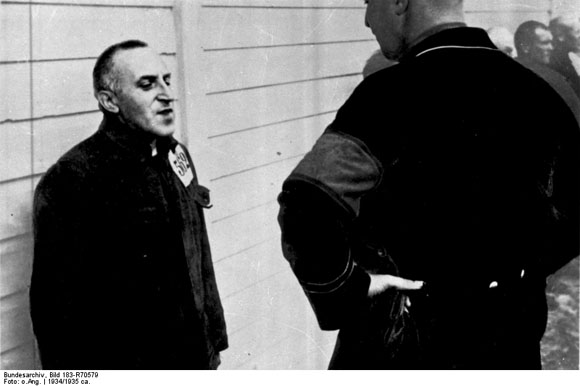Abstract
As publisher of the magazine
Weltbühne, the author and journalist
Carl von Ossietzky (1889-1938), was one of the most important
journalists of the Weimar Republic. Like many authors who wrote for the
magazine, he was a convinced pacifist and democrat. As such, he had
already run into trouble with the government even before Hitler came to
power: in 1931, for example, he had published an article on the secret
rearmament of the Reichswehr (the
Weltbühne Trial). After the Nazi
takeover, Ossietzky was arrested by the Gestapo on a pretext in
connection with the Reichstag fire, tortured, and sent to the Sonnenburg
concentration camp. The Weltbühne was
banned that same year, and Ossietzky's books were removed from libraries
and burned. A year later, he was transferred to the Esterwegen
concentration camp in Emsland, where this picture of the weakened and
emaciated author was taken. In late 1934, completely exhausted from
forced labor, insufficient nourishment, and abuse, he was transferred to
the sick ward, where he was infected with tuberculosis. After his case
attracted international attention on account of his having been
recommended for a Nobel Peace Prize, Ossietzky was transferred to the
state police hospital in Berlin in 1936. During his stay at the
hospital, he was retroactively awarded the Nobel Peace Prize for 1935
and accepted it despite Nazis intimidation attempts. However, he was
forbidden to travel to Oslo for the presentation of the prize. While
still under police supervision, Ossietzky died at the hospital on May 4,
1938, as the result of serious maltreatment and tuberculosis.
